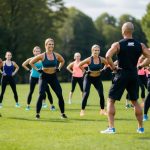Ultimate At-Home Boxing Workouts: Skills, Drills, and Combos for All Levels
Tips for Maximizing Punching Power
To increase punching power, it involves improving leverage, body mechanics, and explosive strength. Using the right techniques and exercises can significantly enhance the force behind punches like the rear hook and lead uppercut.
Leverage and Body Mechanics
Leverage and body mechanics play crucial roles in generating maximum punching power. A punch begins from the ground up; proper stance is essential. Feet should be shoulder-width apart to provide a solid base. Utilizing the hips adds force by rotating them in sync with the punch.
When executing a rear hook, turning the back foot and hips allows more energy transfer. For the lead uppercut, start the motion from the legs, ensuring a smooth transition from the feet, up through the legs and hips, before finally extending the arm. Maintaining balance throughout is key to avoiding loss of strength.
Exercises for Explosive Strength
Exercises that build explosive strength are integral for enhancing punching power. Plyometric exercises, like clap push-ups and medicine ball throws, increase fast-twitch muscle fibers, which contribute to powerful punches. Short, intense sessions help one develop speed and power more effectively than long workouts.
Weight training can also boost strength. Focus on compound exercises such as squats and deadlifts, which work multiple muscle groups simultaneously. These exercises build core and lower body strength, which are vital in transferring power from the ground into a punch. Combining these exercises with technical drills creates a well-rounded routine to maximize power development.
Creating a Structured Boxing Workout Routine
Designing an effective boxing workout routine involves careful consideration of various elements like warming up, cooling down, and planning the sessions accordingly. These components ensure both an engaging and safe exercise environment.
Whether to Kickstart with Warm-Up or Cool Down
A proper warm-up is vital for preparing the body for physical activity, enhancing performance, and reducing injury risk. It usually lasts around 5 to 10 minutes. Key activities in a boxing warm-up may include light jogging, jump rope, and shadowboxing. These exercises help increase blood flow to the muscles and elevate heart rate gradually.
Implementing a cool down at the end of a boxing workout session aids in returning the body to its resting state. This involves stretching major muscle groups, deep breathing exercises, and slower-paced shadowboxing. Cooling down helps prevent muscle stiffness and promotes recovery.
Planning Your Boxing Sessions
A 30-minute boxing workout offers a compact and intense exercise session suitable for all levels. It’s essential to define the focus of each session, which may include different aspects such as footwork, strength training, or cardio.
Sessions can be broken down into rounds, typically 3-5 minutes each, simulating a real boxing match environment. Between rounds, short rest intervals allow for recovery. Integrating various drills, such as bag work, pad work, or speed drills, ensures a balanced training routine and helps develop multiple skills. By tailoring activities to individual fitness levels, both beginners and experienced boxers can benefit.
Key Boxing Resources and Guidance
For enthusiasts looking to enhance their at-home boxing workouts, the right resources and guidance are essential. FightCamp app stands out as a valuable tool. It offers structured training sessions with real-time feedback. Users can practice various skills and track progress, making it a comprehensive resource for both beginners and experienced boxers.
Engaging with a knowledgeable boxing coach can significantly boost skill development. A coach provides personalized feedback, correcting techniques and teaching effective strategies. Whether in-person or through virtual sessions, their insights contribute greatly to a boxer’s journey.
Coach PJ, known for his expertise, offers unique perspectives on boxing techniques. His guidance often includes detailed explanations and practical demonstration videos, which are highly beneficial for individuals practicing at home. His approach caters to various skill levels, ensuring everyone can benefit from his teachings.
Video tutorials and online forums also serve as excellent resources. These platforms allow boxers to learn from a community of peers, share experiences, and pick up new combos and drills. Such interaction can be a source of motivation and camaraderie, enriching the at-home training experience.
Investing time with these resources can elevate an individual’s boxing prowess. By leveraging the tools and guidance available, anyone can effectively refine their skills and enjoy the sport’s many benefits from the comfort of home.



